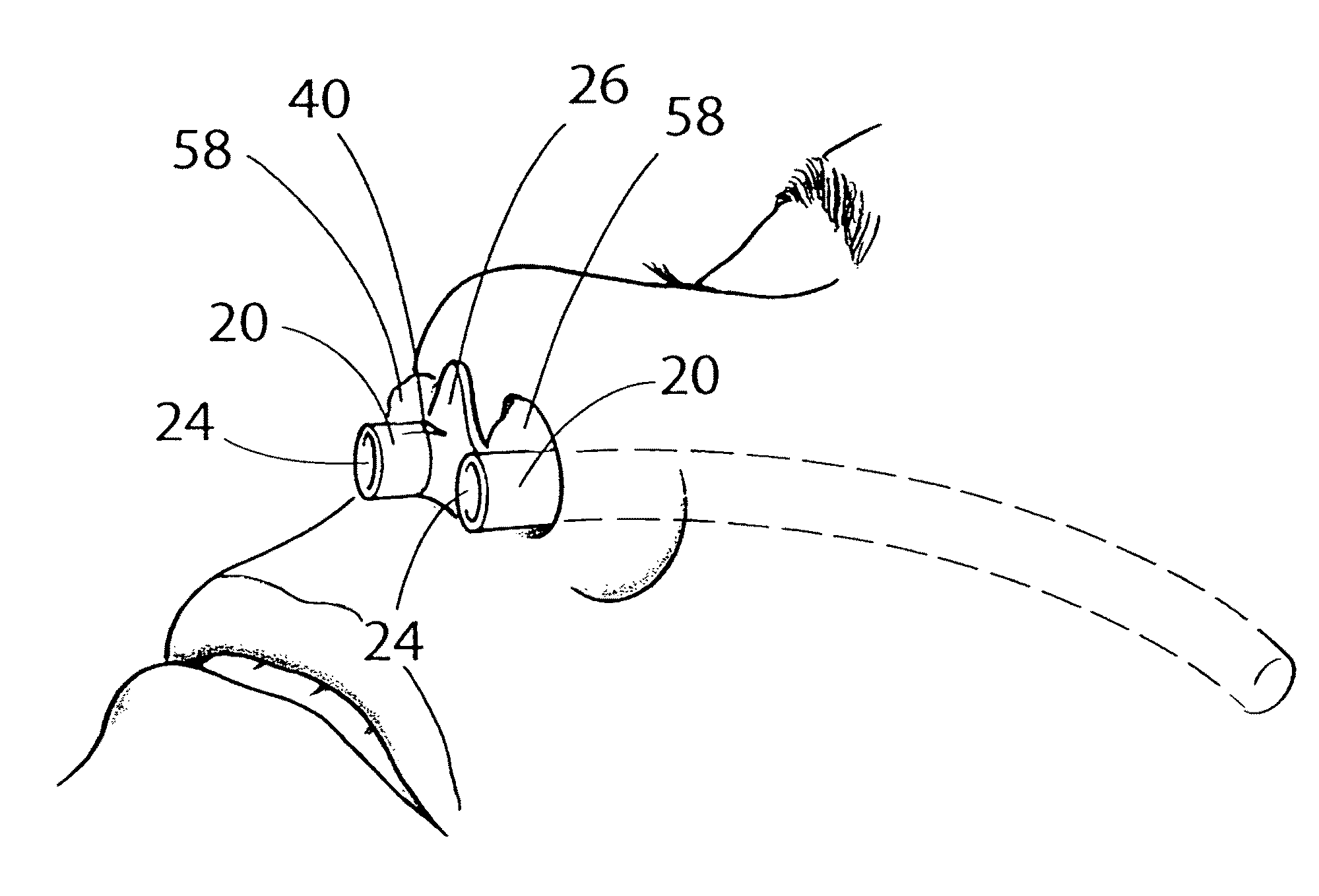Device and method for maintaining unobstructed nasal passageways after nasal surgery
a technology of nasal passageway and nasal passage, which is applied in the field of medical devices and methods for maintaining unobstructed nasal passageways after nasal surgery, can solve the problems of loss of a considerable amount of blood, dry throat and extreme discomfort of patients, and patient's sense of smell, so as to facilitate the placement of packing materials, facilitate the insertion of packing materials, and increase the space
- Summary
- Abstract
- Description
- Claims
- Application Information
AI Technical Summary
Benefits of technology
Problems solved by technology
Method used
Image
Examples
Embodiment Construction
[0026]Referring now to FIGS. 1 to 3, one embodiment of a post-operative medical device 10 of the present invention is shown. In this embodiment, the medical device 10 is splintless. That is, the medical device is devoid of splints, where a splint is generally a device that is used to stabilize a repaired nasal septum. Although this embodiment of the medical device of the present invention is splintless and need not be used in conjunction with a splint to achieve its intended purpose, the medical device may, nonetheless, be used in conjunction with a splint, if the medical professional so chooses.
[0027]The embodiment of the medical device 10 shown in FIGS. 1 to 3 includes two tubular members 20, where each tubular member 20 has a plurality of graduations 22 and a slight curvature along its length. Each tubular member 20 has a proximal end 30, a distal end 32, and a lumen 24 that extends from the proximal end 30 to the distal end 32. The proximal end 30 of one tubular member 20 is con...
PUM
 Login to View More
Login to View More Abstract
Description
Claims
Application Information
 Login to View More
Login to View More - R&D Engineer
- R&D Manager
- IP Professional
- Industry Leading Data Capabilities
- Powerful AI technology
- Patent DNA Extraction
Browse by: Latest US Patents, China's latest patents, Technical Efficacy Thesaurus, Application Domain, Technology Topic, Popular Technical Reports.
© 2024 PatSnap. All rights reserved.Legal|Privacy policy|Modern Slavery Act Transparency Statement|Sitemap|About US| Contact US: help@patsnap.com










